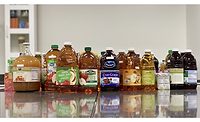WHO Requesting Data on Heavy Metals in Fish

The World Health Organization (WHO) and Food and Agricultural Organization of the United Nations (FAO) is requesting data on methylmercury and total mercury in fish, specifically orange roughy, pink cusk-eel, and all toothfish.
From May 3–13, 2021, the 14th Session of the Codex Committee on Contaminants in Foods was held virtually, and the committee agreed to start working on maximum levels (MLs) for methylmercury in orange roughy and pink cuskeel, and to re-establish the Electronic Working Group (EWG) led by New Zealand and Canada. The EWG will develop MLs and associated sampling plans for consideration by the next committee session, in 2022. The EWG will also consider further data to establish the feasibility of setting an ML for Patagonian toothfish.
All new data must be submitted to WHO through the Global Environment Monitoring System (GEMS) database.
When submitting data to the GEMS/Food database for this work, please do the following:
- Provide complete information on the limit of quantification and limit of detection of analytical methods
- Provide information in the "Local Food Identifier" or "remark/references" fields of the database to allow more specific identification of samples (e.g., is a food fresh or processed, including canned, preserved, salted, etc.)
- Provide information on "State of Food Analyzed," for example, if cooked or raw, and on the “portion analyzed,” including the fat content, dry weight, as is or as consumed
- Provide information for both methylmercury and total mercury and indicate if these form a paired analysis
- Ideally provide information from at least two locations in representative fishery areas; provide information whether it is domestically caught fish or imported fish
The committee is requesting submission of new or additional data on these fish that have not previously been submitted, and the submitted data should cover approximately the last 12 years. Data should be submitted by October 15, 2021, to allow time for data analysis and drafting and review of the paper.
Looking for a reprint of this article?
From high-res PDFs to custom plaques, order your copy today!








.webp?t=1721343192)